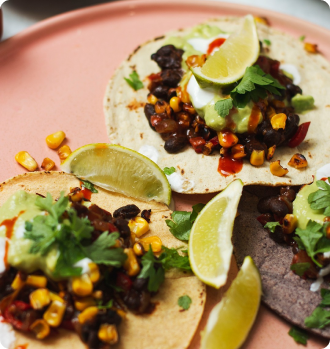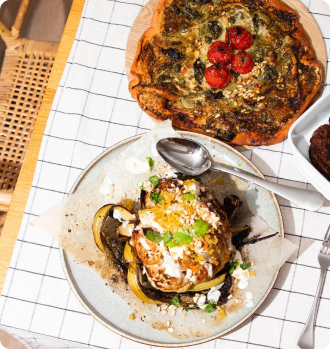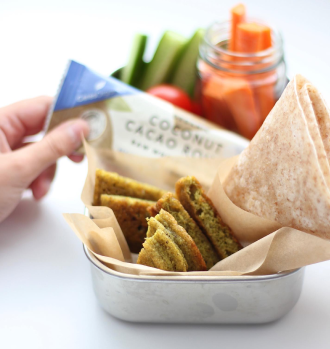How it all began
In 2016, disillusioned with the treadmill of big corporate life, traffic, “keeping up with the Jones’” and a lack of space for our girls, we decided to make the mid-life crisis “tree change”. Without a job to go to, but knowing we could sell our Melbourne home for more than the cost of buying a rural property we settled on an area in North East Victoria we wanted to move to and started property hunting. Our aspiration to buy a 10 acre block and build our own home evolved to buying a 120 acre block with an established house. This evolution typified the flexibility we needed to embrace to make this change.
In a notoriously fire prone area of Australia, the land we had acquired needed to be “managed”, not only to protect our property but also our neighbours. It was obvious that we needed to buy some livestock to keep the grass down – and so our hobby farming venture took flight.
But I needed to find work. Still slightly bruised from the corporate world I was happy to look for work locally in hospitality, but whether you call it fate, the planets aligning or just very good fortune, I received a phone call from Noel Josephson, the co-founder of Ceres Organics. Noel and I had crossed paths a little earlier in my career and we had got along well. Conversations evolved and I was lucky enough to be offered the opportunity to come and work for Ceres Organics. Working for a social enterprise and a purpose lead company rekindled my faith in what business could and should be like.
Early mistakes on the farm
Desperately trying to remember the things I had learnt 25 years earlier during my conventional Agriculture Degree I launched in to my farming hobby in my spare time with gusto. We sprayed out paddocks with glyphosate, sowed largely mono-culture rye grass paddocks and bought cows to chew it down.
Then our first summer approached. Rye grass doesn’t grow in 40 degrees (I actually subsequently found out it won’t grow about 26 degrees!) and so within no time, we had no grass, bare dusty soil (or what was left of it) and too many cattle. I had successfully denuded my paddocks, exposed the soil to all manner of erosion and was now having to buy considerable amounts of hay in to feed my cows. It’s fair to say that it was an ecological and economic disaster. It wasn’t great for my cows either. Dusty dry conditions coupled with their heads stuffed in hay feeders all day proliferated pink eye through the herd and now I was having to treat them all with antibiotics. They were miserable, and I felt guilty and miserable.
The wake up
This was a big wake up call for me and when I look back on it now I cannot believe the naivety and blinkeredness with which I approached this period of farming. It was supposed to be exciting and pleasurable but it was stressful and demoralising.
I had not taken a step back to look at my property. To understand the landscape we were operating within. To observe how nature was coping with and in some small pockets thriving in this harsh environment. Coupled with this, I was now working for an organic food company yet had ignorantly and arrogantly relied on my previous learning to set up my venture. I embarked on a period of re-education. I immersed myself in organic and regenerative farming books and started to see our property quite differently. I started to explore the mysterious world of biodynamics and read Rudolph Steiner’s lectures on Agriculture (a few times to try to understand it!). Put simply, I was changing my perspective, my perceived reality, and I really liked what I was reading. I did not understand it all, but it resonated with me and I knew by practicing what I was reading I would likely do no further damage to my property and nature and would hopefully start to help it.
Putting organics and biodynamics in to practice on the farm.
It’s a misconception that the best way to work with nature is it to leave it solely to its own devices. Mother Nature does indeed have phenomenal healing and regenerative powers, but much of the world’s agricultural land has been so severely ruined it could take hundreds of years for nature to reverse these ill effects. So nature needs a hand, and this is where organic and biodynamic agriculture and horticulture come in. Observing and working with nature, organic agriculture promotes what grows best in an area, builds biodiversity and soil through regenerative practices, sequesters carbon in to the soil, relies on natural inputs to speed up the regenerative processes and eliminates the addition of harmful artificial chemicals and inputs that degrade soils and significantly impact biodiversity.
So what did this mean in reality on our farm. Firstly, we sold half our cows and bought a few sheep. The cows were putting too much grazing pressure on our paddocks and stripping them bare. Cows and sheep also have different grazing preferences and habits, and so by having both livestock we were preventing the proliferation of certain undesirable plant species that were not grazed by one type of livestock in isolation.

Secondly, inspired by my reading of Joel Salatin’s books I started to think about how I might be able to manage my paddocks to keep them vegetative and covered for as long as I could through the season. One of the key aspects of building soil is to always have something growing. Growing plants not only protect the soil from erosion and heat, they also interact with and feed soil microbes, becoming an integral part of the nutrient cycle and sequestering carbon back in to the soil where it belongs from the atmosphere. I started to grow grasses that could handle the dry summers such as cocksfoot and Phalaris and complemented this with cool grasses for autumn and winter growth and allowed native species to also become part of this mix. Into this we then integrated various weeds and forbs that provide more biodiversity and nutrition for livestock such as chicory, dandelion, plantain, buckwheat, millet, and sorghum. They say that a really healthy pasture would have over 60 species of plants growing at any one time. This provides animals and soil with the diversity it needs to flourish. I have some way to go, but we are on the right journey.
Thirdly, we needed to give the soil a helping hand through the addition of tonics and preparations that encourage microbial diversity and proliferation. After all, its these bacteria and fungi alongside small invertebrates and insects that are the predominant builders of soil and humus. One of the concepts of both organic and biodynamic practices is that you feed the soil not the plant. A healthy soil will provide the plant with all it needs to become a healthy, nutrient rich food source for humans and animals. We started to make our own plant teas, seaweed concentrates, and compost preparations based largely on biodynamics to encourage this microbial growth to build the soil. Sprayed out over the growing season these work with nature to build soil and support the microbes within it that unlock all the required nutrients and minerals that the plant requires.

I do not claim to be an expert on organic farming in any way and have so much more to learn. But I can say with confidence that our soil is healthier and growing, our biodiversity on the farm has increased dramatically for the better, our animals are very happy and healthy and my family can walk around in confidence that there are no harmful chemicals under foot or lying around. It’s also way less stressful for me and the pursuit of picture-perfect agricultural perfection of monocultures is, thank goodness a distant memory.
The organic journey for us as a family continues to evolve as have now embraced organic vegetable gardening with passion and a longer term aspiration to be self-sufficient. It’s another exciting learning opportunity and the early years have seen plenty of failures. As we build the soil over time in our veggie patches through extensive composting, I know that we will grow strong, nutrient rich and more pest resistant food as the years progress and these failures will start to dissipate.
We are on a journey, and we love it.








